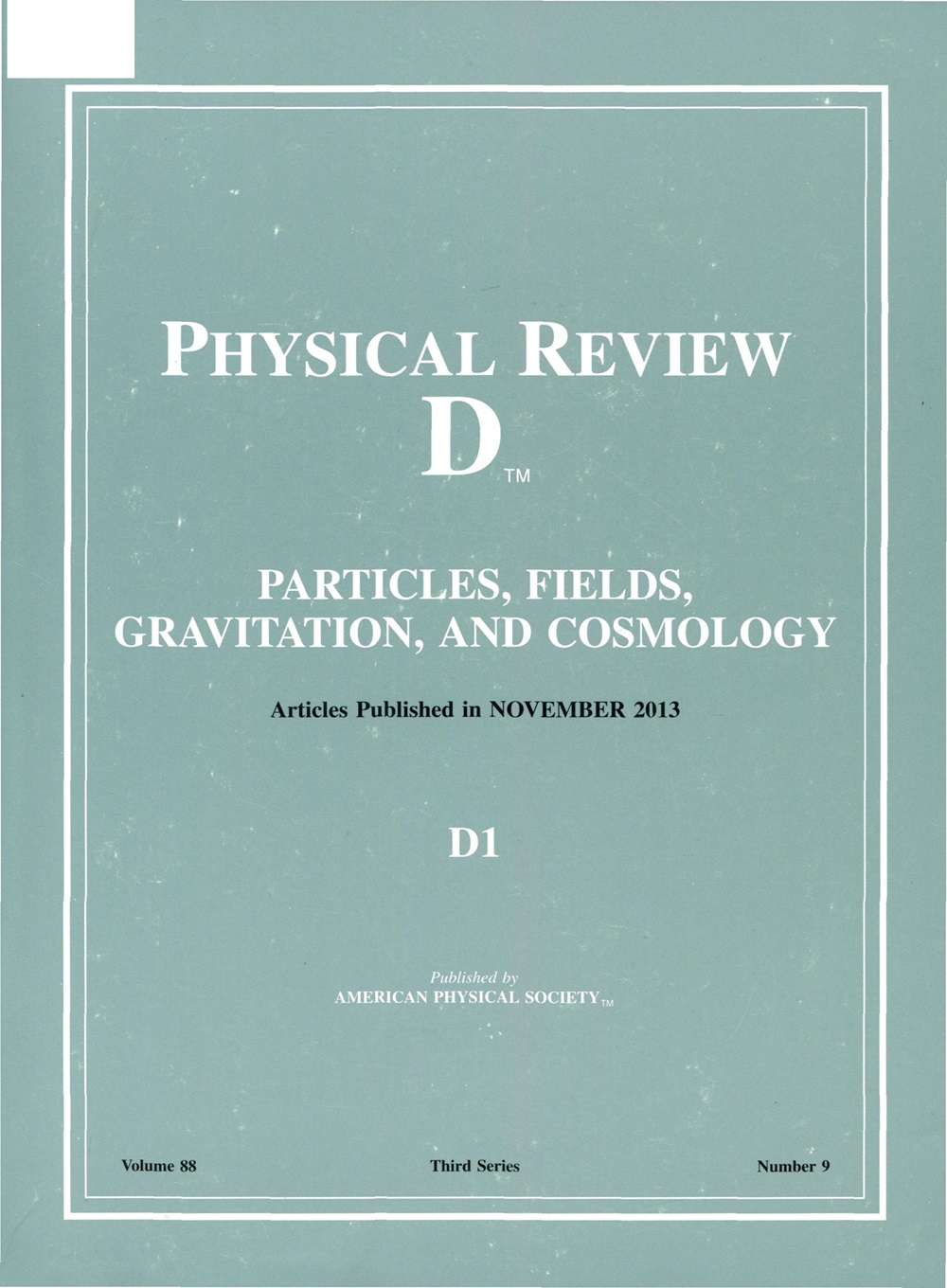Quantum work extraction of a moving battery as a witness to Unruh thermality in high-dimensional spacetimes
IF 5.3
2区 物理与天体物理
Q1 Physics and Astronomy
引用次数: 0
Abstract
We put forward a physical model of a uniformly accelerated Unruh-DeWitt battery and use quantum work extraction as a probe to witness the thermal nature of the Unruh effect in a high dimensional Minkowski spacetime. By means of the open quantum system approach, we investigate the maximal amount of quantum work extraction with respect to the acceleration-induced Unruh temperature, spacetime dimensionality, and field mass. It has been found that the steady amount of quantum work extraction in the asymptotic condition is just determined by the Unruh temperature in arbitrary dimensional spacetimes. The asymptotic behavior can demonstrate the global feature of Unruh thermality dependent on the Kubo-Martin-Schwinger condition. From a local viewpoint of the Unruh effect, we study the different ways for the dynamics of quantum work extraction when the battery gradually arrives at the same steady state. In the massless scalar field, the evolution with a small acceleration takes on a unique monotonicity in D=3 dimensional spacetime and changes to a decaying oscillation for other higher dimensions. The increase in spacetime dimensionality can increase the energy storage capacity of the moving battery. If the mass of the scalar field is considered, the related quantum work extraction is so robust against the Unruh decoherence that the high values can keep for a very long time. The persistence of quantum work extraction is strengthened in higher dimensional spacetime.运动电池的量子功提取作为高维时空中Unruh热性的见证
我们提出了均匀加速Unruh- dewitt电池的物理模型,并使用量子功提取作为探针来见证高维闵可夫斯基时空中Unruh效应的热性质。通过开放量子系统方法,我们研究了关于加速诱导的Unruh温度,时空维度和场质量的最大量子功提取量。研究发现,在渐近条件下,量子功提取的稳定量仅由任意维时空中的Unruh温度决定。该渐近行为可以证明依赖于Kubo-Martin-Schwinger条件的Unruh热态的全局特征。从Unruh效应的局部观点出发,研究了电池逐渐达到相同稳态时量子功提取的不同动力学方式。在无质量标量场中,具有小加速度的演化在D=3维时空中呈现唯一单调性,在其他高维空间中变为衰减振荡。时空维数的增加可以提高移动电池的储能容量。如果考虑标量场的质量,相关的量子功提取对Unruh退相干具有很强的鲁棒性,高值可以保持很长时间。量子功提取的持久性在高维时空中得到加强。2025年由美国物理学会出版
本文章由计算机程序翻译,如有差异,请以英文原文为准。
求助全文
约1分钟内获得全文
求助全文
来源期刊

Physical Review D
物理-天文与天体物理
CiteScore
9.20
自引率
36.00%
发文量
0
审稿时长
2 months
期刊介绍:
Physical Review D (PRD) is a leading journal in elementary particle physics, field theory, gravitation, and cosmology and is one of the top-cited journals in high-energy physics.
PRD covers experimental and theoretical results in all aspects of particle physics, field theory, gravitation and cosmology, including:
Particle physics experiments,
Electroweak interactions,
Strong interactions,
Lattice field theories, lattice QCD,
Beyond the standard model physics,
Phenomenological aspects of field theory, general methods,
Gravity, cosmology, cosmic rays,
Astrophysics and astroparticle physics,
General relativity,
Formal aspects of field theory, field theory in curved space,
String theory, quantum gravity, gauge/gravity duality.
 求助内容:
求助内容: 应助结果提醒方式:
应助结果提醒方式:


